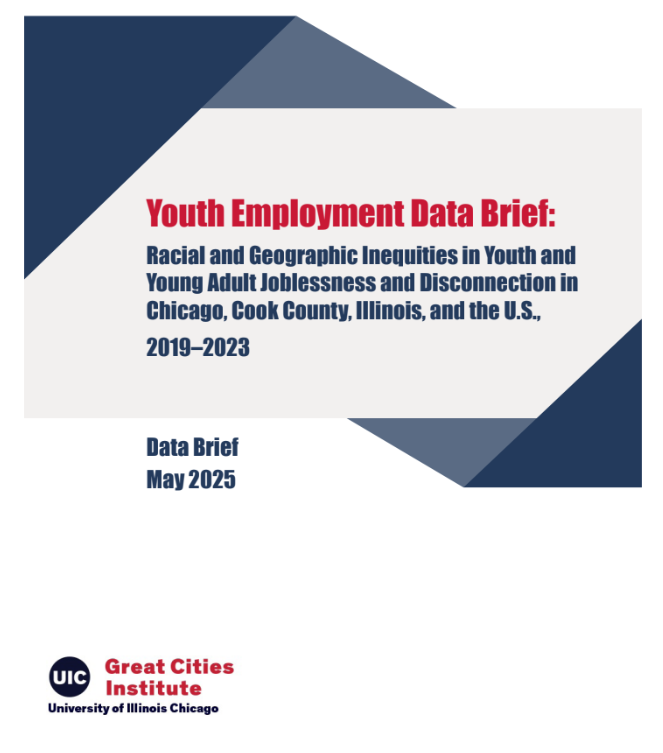Executive Summary:
This data brief examines persistent racial and geographic disparities in youth and young adult joblessness and disconnection from school and work across Chicago, suburban Cook County, Illinois, and the U.S. between 2019 and 2023. Using the most recent American Community Survey data, the analysis reveals stark inequities, particularly for Black and Latino youth in Chicago.
Key findings include:
-
-
Exceptionally High Joblessness: In 2023, over 78% of Black 16- to 19-year-olds in Chicago were jobless, compared to 74.2% of Latino and 73.8% of White youth—rates well above national and state averages.
-
Persistent Disconnection: Black youth in Chicago remain significantly more likely to be out of school and jobless than their peers. In 2023, 14.3% of Black 16- to 19-year-olds were disconnected—more than four times the rate for White youth.
-
Uneven Recovery for Young Adults: Jobless rates for Black 20- to 24-year-olds declined in 2022 but rose again in 2023 to 47.6%, while rates for White and Latino peers steadily fell, widening racial disparities.
-
Stark Spatial Inequities: Maps show jobless and disconnected youth are concentrated in South, West, and Southeast Side neighborhoods in Chicago, where rates often exceed 80% for teens.
-
Programmatic Impacts: Evidence from Chicago and other major cities confirms that summer youth employment programs can reduce violence, improve job readiness, and enhance long-term economic outcomes.
-
These findings underscore the need for sustained, targeted investments in employment and education opportunities, especially for marginalized youth in the hardest-hit communities.
Authors:
Matthew D. Wilson, Ph.D.
Associate Director of Economic & Workforce Development, UIC Great Cities Institute.
Jason “Jay” Campos
Research Associate, UIC Great Cities Institute.
Read and Download the Full Report Here.



